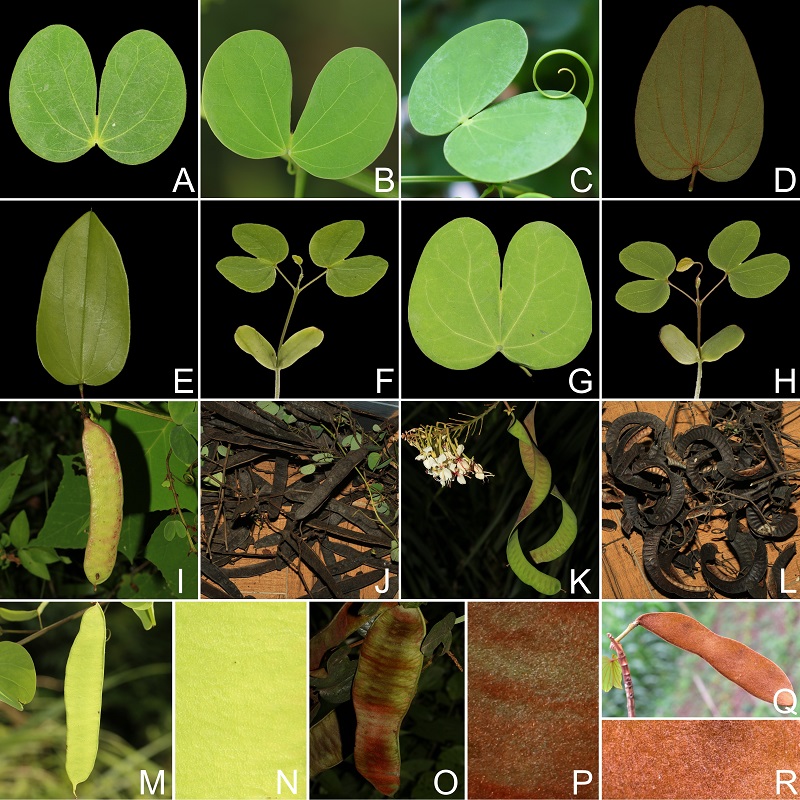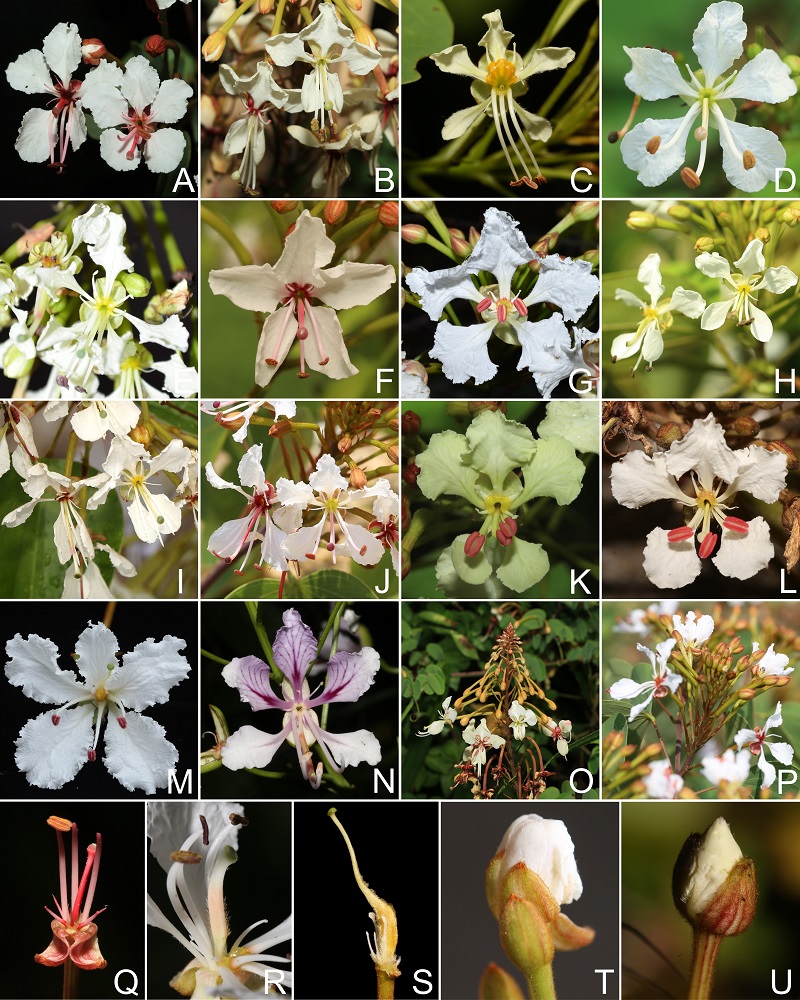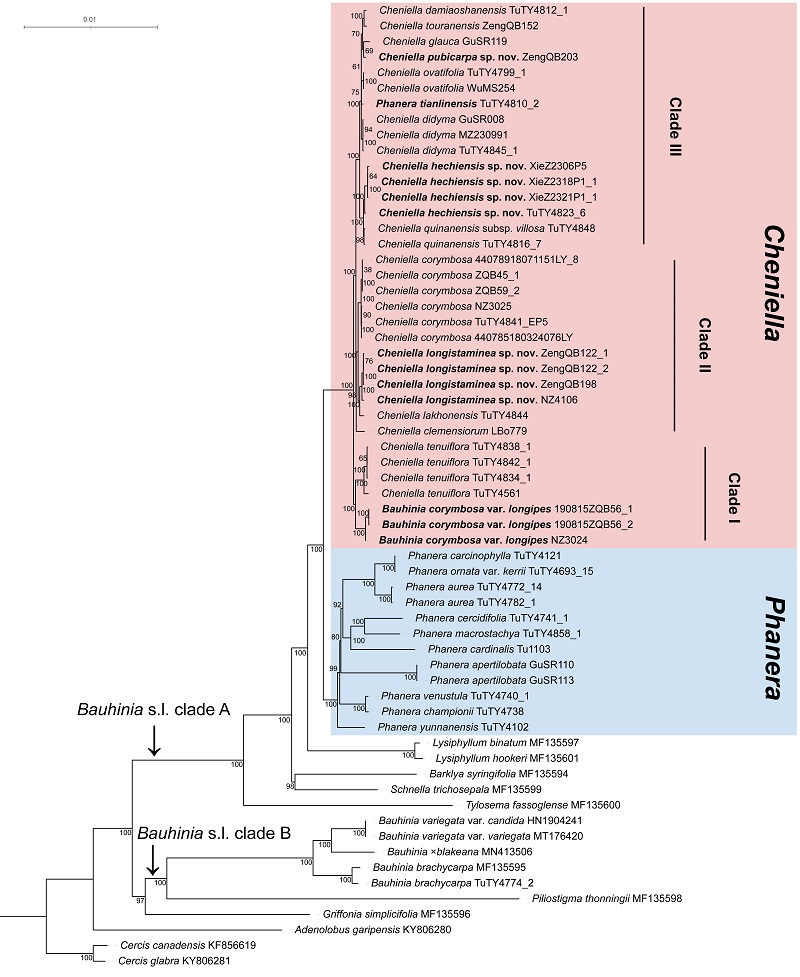Phylogeny and re-circumscription of Cheniella (Leguminosae: Cercidoideae)
Leguminosae is the third largest family of angiosperms after Asteraceae and Orchidaceae in terms of the number of species, and many of them have important economic, ecological and social values. Subfamily Cercidoideae is an early-diverging lineage of Leguminosae, contains about 14 genera and 335 species distributed pantropically and in some subtropical regions, including the newly segregated genus Cheniella R.Clark & Mackinder. The genus name is in honour of Ms. Dezhao Chen of South China Institute of Botany for her contributions to the taxonomy of Leguminosae.
The circumscription of Cheniella by Clark & al. (2017) incorporated 10 species and 3 subspecies. The centre of diversity of Cheniella is in southern China, and its full distribution range extends westward to India and southeast through Indochina into Malesia. Despite morphological and palynological evidence suggesting that Cheniella possesses a suite of synapomorphic characteristics, clearly distinguishing it from other species within Bauhinia s.l., the circumscription, phylogenetic relationships of this genus, and the evolution pattern of key traits remain ambiguous or contested, necessitating further research.
To this end, researchers from the Phylogeny and Reproductive Biology Research Team (PI: Tieyao Tu) of South China Botanical Garden, Chinese Academy of Sciences (SCBG), in collaboration with researchers from the Royal Botanic Gardens, Kew (UK), and the Smithsonian Institution (USA), have integrated morphological studies and plastid phylogenomics techniques to study the phylogeny and evolution of Cheniella. The phylogenetic analyses yield a well-resolved tree of Cercidoideae with robust support at most nodes. Based on the results of molecular analyses and morphological studies combined with distribution data, the circumscription of Cheniella was broaden to comprise a total of 15 species and 3 subspecies, including three new species and two new combinations. The study also revealed that the bilobed leaf morphology is the ancestral trait of Bauhinia s.l., and the entire or slightly bilobed leaf is the derived trait through seedling growth experiments.
This study, entitled “Phylogeny and re-circumscription of Cheniella (Leguminosae: Cercidoideae) based on plastome data and morphology, with description of three new species”, was recently published in Taxon with Shiran Gu (PhD student of SCBG) as the first author, Associate Professor Tieyao Tu as the corresponding author, graduated master student Qiubiao Zeng and master student Kaiwen Jiang, Dr. Ruth Clark, Dr. Oscar Alejandro Pérez-Escobar and Prof. Alexandre Antonelli of Royal Botanic Gardens, Kew and Professor Jun Wen of the Smithsonian Institution, and the others participated in the work. This work was financially supported by the National Natural Science Foundation of China (31270222) and the Guangdong Provincial Special Fund for Natural Resource Affairs on Ecology and Forestry Construction (GDZZDC20228704).
Article link: http://doi.org/10.1002/tax.13177
First author information: Shiran Gu: PhD student, Plant Sciences Center, South China Botanical Garden, Chinese Academy of Sciences, Research field: Plant phylogenomics and evolution, E-mail: gushiran@scbg.ac.cn.



File Download: